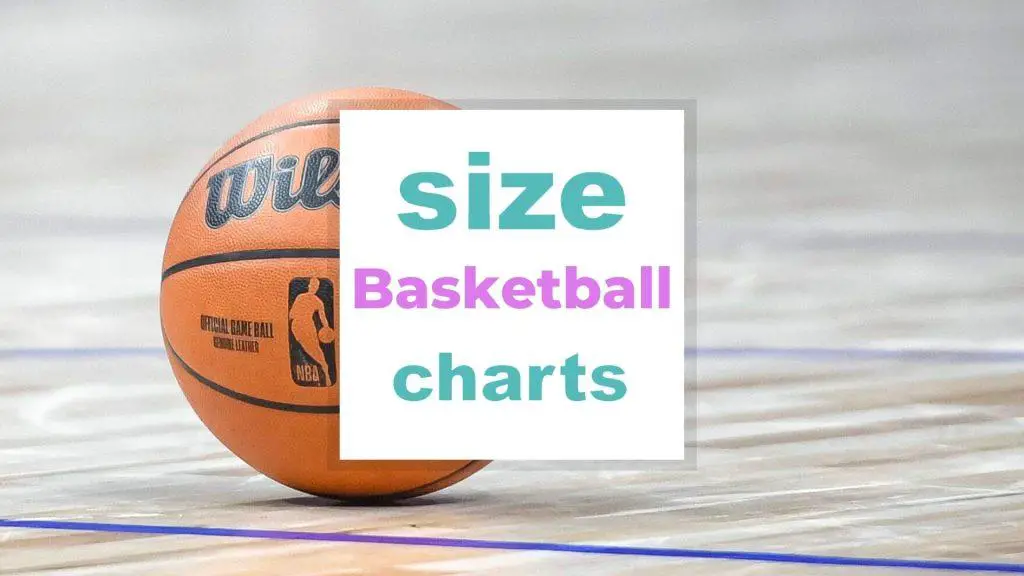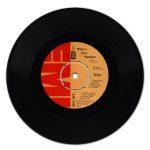Basketball Size Guide
Basketballs are spherical balls utilized in basketball games. Basketballs are vital in the game of basketball. In fact, they are the game itself. The game involves two teams, each with five players on a marked rectangular court. Each team attempts to score by hurling the ball through their rival’s basket (skip straight to the Basketball Size Guide).
The official-size ball used to play in the NBA, men’s high school, and collegiate leagues is a ball with 29.5 inches in circumference. Women’s basketballs on the other hand are 28.5 inches in circumference, which applies to all women’s leagues. Youth basketballs tend to be smaller.
Basketballs are produced in different diameters. According to the International Basketball Federation (FIBA), a standard NBA ball’s diameter is 9.43 to 9.51 inches whereas the WNBA basketball diameter is 9.07 to 9.23 inches. The NCAA basketball diameter is 9.39 to 9.55 inches for men along with 9.07 to 9.23 inches for women.

Basketballs are available in brands like Spalding, Wilson, Nike, and more.
Basketballs are either made of leather, rubber, or synthetic rubber.
Most basketballs come in burnt orange color while some are in blue, yellow, black, and even multi-colored. Most leagues and teams however demand a standard orange basketball.
To play exceptional basketball, you need to use a right-sized ball. Playing with a basketball that’s too big or small for your grip limits your skills and diminishes your game. Therefore, to improve your game and boost confidence, it’s significant that you understand the ball size you need. Read through this comprehensive guide to learn more.
Jump right into the Frequently Asked Questions
Related: Paintball Gun size – guns, gear and caliber size chart, Ball Size chart for exercising or for your office
Basketball Size Guide Table of Contents
Basketball size chart
Related: Sports Ball by Size
This handy chart covers everything to do with basketball size by dimensions, weight, and age, all converted.
Note: inch, cm, g, and oz measurements are approximate roundings.
| Size | Circumference | Diameter | Weight | Age |
| Size 7 | 29.5 inches 74.9 cm 749 mm | 9.4 inches 23.9 cm 239 mm | 22 oz 624 g 1.38 lb | Boys aged 15+ years |
| Size 6 | 28.5 inches 72.4 cm 724 mm | 9.1 inches 23.1 cm 231 mm | 20 oz 567 g 1.25 lb | Boys ages 12 to 14, Girls ages 12+ |
| Size 5 | 27.5 inches 69.9 cm 699 mm | 8.8 inches 22.4 cm 224 mm | 17 oz 482 g 1.06 lb | Boys and girls ages 9 to 11 |
| Size 4 | 25.5 inches 64.8 cm 648 mm | 8.1 inches 20.6 cm 206 mm | 14 oz 397 g 0.87 lb | Boys and girls ages 5 to 8 |
| Size 3 | 22 inches 55.9 cm 559 mm | 7 inches 17.8 cm 178 mm | 10 oz 283 g 0.62 lb | Boys and girls ages 4 to 8 |
How to choose the right basketball size
Related: Golf Ball Size and dimensions: Is every ball the same size?
Before you start to play basketball, you need to understand the different sizes available, and which size suits you. There is an ideal basketball made for everyone interested in playing the game.
The right basketball size depends on factors such as the player’s gender, age, level of play, and the type of surface on your basketball court. Official tournaments and games prioritize the use of correct-size basketball concerning the factors mentioned above.
This comprehensive guide will help you understand all basketball sizes. Read through.
Basketball sizes by age and gender
Basketball sizes vary to meet the needs of players of different ages. Generally speaking, younger players cannot play with a basketball of the same size as an adult ball.
Along with many ball sports, the sizes of basketballs are characterized by a number. The greater the number of the ball is, the bigger it is. Five basketball sizes are commonly used all over the world.
- Kids basketball dimensions
The size of the basketball also has an immense impact on the ball-handling and shooting technique of kids since they will have to change their hand positioning on a larger ball.
The basketball for kids are:
Novelty/Toy size Basketball
The smallest ball you can find in sports shops is the Novelty basketball. These balls aren’t produced with precise science in mind. They have circumferences ranging between 9 to 20 inches and weigh about 1 to 5 ounces. The Novelty basketballs are ideal for toddlers, or even adults who just love playing with them.
Size 1 Basketball
Also known as a “Micro-Mini” basketball, size 1 is the initial official ball size. These basketballs weigh about 7 oz or 200 g and have a circumference of 16 inches or 41 cm. They are best for boys and girls between ages 2 to 4 who are trying to grasp an early head start on the game.
Size 3 Basketball
Most people prefer to skip Size 2 while transitioning from Size 1 and go directly for Size 3 or the Mini basketball. They are the smallest balls officially used.
These ball sizes are suitable for boys and girls aged 4 to 8. They weigh about 10 oz or 283 g and have a circumference of 22 inches or 56 cm.
Size 4 Basketball
Size 4 basketballs are ideal for boys and girls aged 5 to 8. They weigh around 14 oz or 397 g, with a circumference of 25.5 inches or 65 cm.
- Youth basketball sizes
Once kids somehow grow out of childhood, they should be transitioned to a more standard youth-sized ball.
Size 5 Basketball
Any young basketball expert should have a size 5 ball for practice.
The weight and measurements of a size 5 basketball are 17 oz (480 g) and 27.5 inches (70 cm) respectively. These ball sizes are suitable for players aged between 9 and 11.
Size 6 Basketball
Size 6 basketball is greatly used in all women’s games from high school and college level to professional FIBA and WNBA leagues. However, it’s also endorsed for male youth players of ages 12 to 14.
Size 6 balls weigh 20 oz (570 g) and have a circumference of 28.5 inches (72 cm).
- Standard Size Basketball
The standard-size basketball for adult men from high school to professional leagues is Size 7.
Size 7 Basketball
If you play basketball competitively, size 7 is the ideal size for you. It’s suitable for men aged 15 and above, and it’s the sole ball size you will find being used to play at every NBA, NCAA, or Olympic basketball game.
These balls weigh 22 oz, 2 oz heavier than a size 6. Their circumferences are 29.5 inches or 74.9 cm respectively.
Basketball Weight
The weight of a basketball depends entirely on its size. Weight is a significant detail in the game, as any smallest variation in size and weight affects a player’s shooting, passing, or dribbling technique.
The standard-size basketball of 29.5 inches circumference weighs 22 ounces. There should never be mistakes when inflating the ball because the performance of the best players depends on it.
Consequently, a basketball that’s underinflated weighs a bit less than an overinflated one. However, the performance between the two balls varies extremely.
Basketball Materials
The outside casing of a basketball is either made of leather, rubber, or synthetic rubber. The inside comprises a bladder, which is a ballon-like setup that confines air, and the carcass. The carcass is made of nylon threads or polyester, while the bladder consists of butyl rubber.
Leather basketballs are used by pros. The material is very soft and flexible. Additionally, leather basketballs give players a boost in control. While your hands are sweaty, you can sustain a top-level grip. Leather basketballs are used to play on indoor basketball courts since they can’t damage the floors.
However, leather basketballs have disadvantages too. They are not resistant to water and become very heavy when wet. Moreover, they are expensive to make and maintain. Moreover, leather basketballs cannot be used on outdoor courts as leather roughens and tears.
Rubber basketballs are generally used on outdoor basketball courts. They provide extra bounce and are durable. Rubber basketballs are ideal for beginners.
Synthetic basketballs give players a reasonably triumphant middle ground when it comes to performance. They are best for both outdoor and indoor courts and are durable. Synthetic basketballs however pose a threat to the environment since they are not biodegradable. Additionally, if burned harmful toxins are released.
Learn more about basketball and different types (video)
Frequently asked questions
Is a size 7 basketball NBA size?
A size 7 is the largest available basketball, used by some of the best players to play in the NBA. It can also be referred to as the standard-size NBA basketball. It has a circumference of 29.5 inches or 74.9 cm
What is a size 6 basketball?
Size 6 basketball is greatly used in all women’s games from high school and college level to professional FIBA and WNBA leagues. However, it’s also endorsed for male youth players of ages 12 to 14.
Size 6 balls weigh 20 oz (570 g) and have a circumference of 28.5 inches (72 cm). The size and weight difference between this ball and the size 7 ball are because the players of the WNBA have smaller hand stretches than the NBA players.
What is the size of the ball in the NBA?
The standard size for the basketball used to play in the NBA is 29.5 inches or 74.9 cm in circumference and 9.4 inches or 23.9 cm in diameter.
What right-size basketball should I get?
To get the right size of a basketball, you need to understand the different sizes available, and which size suits you. There is an ideal basketball made for everyone interested in playing the game.
The right basketball depends on factors such as the player’s gender, age, level of play, and the type of surface on your basketball court.
There are five sizes of basketball available that you can choose from:
- Size 3: These ball sizes are suitable for boys and girls aged 4 to 8. They weigh about 10 oz or 283 g and have a circumference of 22 inches or 56 cm. Size 3 basketballs are ideal for kids since they are lightweight and therefore easy to handle.
- Size 4: Size 4 basketballs are ideal for boys and girls aged 5 to 8. They weigh around 14 oz or 397 g, with a circumference of 25.5 inches or 65 cm. A size 4 basketball is usually the first-entry level basketball issued to kids expected to master the game.
- Size 5: The weight and measurements of a size 5 basketball are 17 oz (480 g) and 27.5 inches (70 cm) respectively. These ball sizes are suitable for players aged between 9 and 11.
- Size 6: Size 6 balls weigh 20 oz (570 g) and have a circumference of 28.5 inches (72 cm). Size 6 basketball is greatly used in all women’s games from high school and college level to professional FIBA and WNBA leagues. However, it’s also endorsed for male youth players of ages 12 to 14.
- Size 7: These balls weigh 22 oz, 2 oz heavier than a size 6. Their circumferences are 29.5 inches or 74.9 cm respectively. This ball size is suitable for men aged 15 and above, and it’s the sole ball size you will find being used to play at every NBA, NCAA, or Olympic basketball game.
What basketball is perfect for an 11-year-old?
A size 5 basketball is perfect for an 11-year-old boy or girl. Due to its lighter weight, young players can perfect their shooting, passing, and dribbling skills without frustration.
What’s the right size for women’s basketball?
In the United States, as well as in several other countries, women’s basketball size is 28.5 inches or 72 cm in circumference. The ball weighs 20 oz or 570 g. Size 6 basketball is greatly used in all women’s games from high school and college level to professional FIBA and WNBA leagues.
What’s the difference between indoor and outdoor basketballs?
The major difference between indoor and outdoor basketball is the material used to make each ball. Indoor basketballs are usually made of rubber. Outdoor basketballs on the other hand are made from leather. Indoor/outdoor basketballs are typically made of synthetic rubber.
Conclusion
It’s no lie that deciding the right size of basketball can be overwhelming. There are many sizes of basketballs available in the market today. However, worry not for we’ve got you covered! This basketball sizes guide has equipped you with everything you need to know about basketball sizes. Whether you are looking for suitable basketball sizes for your child or yourself.
We hope that this guide has answered any questions you had concerning basketball sizes.
Thank you for reading this article. Feel free to leave any comment or question in the comment box below.
Picture in this post is by Jason Leung on Unsplash
Related to Balls Size Guide
- O’Neill Wetsuit Size Charts
- Poker Chip Size Guide
- Baseball Card Size Guide
- Bocce Ball Court Size and Dimensions
- Pickleball Court Vs. Tennis Court
- Pool Cue Length – Why it is Important?
- Basketball Hoop Rim Size and Diameter
- Helicopter Sizes and Different Types
- Chessboard Dimensions: What Is The Size Of It?
- Vinyl Record Size and Dimensions
- Ping-Pong Ball Size Chart
- Dolls Size: What Are the Different Sizes of Dolls?
- Baseball Size and Dimensions
- Soccerball Size Guide and Dimensions
- Bocce Ball Size Chart
- Bowling Ball Size and Dimensions
- What is the Size of a Playing Card?
- Basketball Size Guide
- Tennis Ball Size Guide and Dimensions
- Volleyball Size Chart
- Cycling gloves size charts
- Steps Calculator: Steps in a km + Distances
- Beer Pong Table Dimensions
























